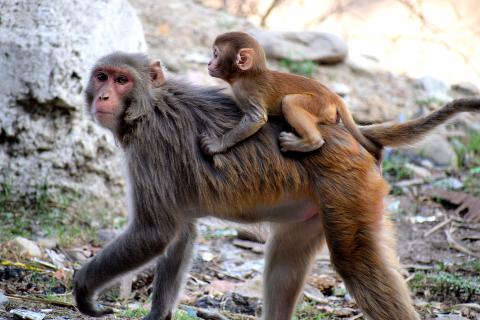
Can roadless areas improve the conservation status of species?
Primates (monkeys...) are a highly threatened group: about 60% of species are currently threatened with extinction, and many non-threatened species are declining in abundance1. This dire conservation status is due to increasing pressures on primates and their habitats: expansion and intensification of agriculture (e.g., large-scale ranching), logging, oil and gas drilling, mining, dam construction, etc.
Among these common threats we also find the construction of new road networks, which are both a direct consequence of these activities but also mean an increased risk of further disturbance due to improved access to habitats.
Given that primate ranges largely overlap with a large and rapidly growing human population characterized by high levels of poverty, global attention is needed to effectively detect degradation in species conservation status. Currently, the IUCN Red List of Threatened Species plays a central role in biodiversity conservation, but it is a tool that is by definition reactive, and resource constraints may hinder rapid updating. This process could benefit from extinction risk models that would flag species and prioritize their (re)assessment2.
This master's course (4 months in 2023) focuses on statistical modeling of extinction risk and aims to examine whether relatively accessible indicators of environmental anthropization (=human transformation) can be mobilized to prioritize when re-evaluating the conservation status of species.
For indicators of environmental anthropization, we propose to examine
- The mapping potential developed by the Roadless Initiative on roadless areas, as well as
- the Human Footprint Index.
We have previously worked on primates and therefore have a large data set for our analyses.
References: (1) Estrada et al. 2017 (2) Cazalis et al. 2022)
.
.
- Responsible: Carmen Bessa-Gomes of the ESE laboratory
- Master concerned: Biodiversity, ecology and evolution
- Graduate school of the University Paris-Saclay involved: Biosphera
- Other laboratory involved: cE3c - Center for Ecology, Evolution and Environmental Changes, Lisbon, Portugal

